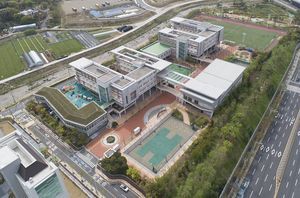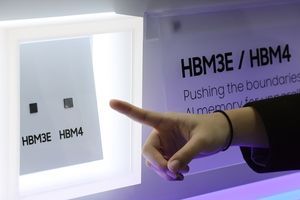The U.S. government is raising objections to the RISC-V standard that Samsung Electronics (005930) has selected as a future system semiconductor design intellectual property. Unlike traditional Central Processing Units (CPUs) such as ARM and x86, RISC-V is an open-source design, raising concerns that it could be used in China’s semiconductor development. The U.S. government has labeled RISC-V as a potential risk, sparking worries that the ecosystem involving Samsung Electronics could be jeopardized.

| Photo Credit: Samsung Electronics |
Reuters reported on the 23rd (local time), “The U.S. Department of Commerce has sent a letter to Congress members reviewing the impact of China’s involvement in RISC-V technology on national security.” This is in response to the claim made by 18 U.S. House and Senate members last November, stating, “We must prevent China from gaining the upper hand in the RISC-V sector and compromising U.S. security.” The Department of Commerce wrote in the letter, “We are evaluating potential risks and whether there are measures to address these concerns effectively,” and “We must take careful steps to avoid harming U.S. companies researching RISC-V.”
This suggests that while they view China’s RISC-V research as a potential risk, they also consider the cost-benefit as many U.S. companies are involved in RISC-V development. Numerous companies from various countries are involved in the RISC-V project. Qualcomm, Intel, Google, Nvidia, and other U.S. companies are participating, but among the vice-chair companies are Alibaba, with Huawei, Tencent, and ZTE as premium members. Samsung Electronics remains a strategic member, one level below the premium members. This is one of the semiconductor design projects with the most substantial Chinese influence.
This is a result of the nature of RISC-V being an open-source project. RISC-V is a new CPU of the RISC (Reduced Instruction Set Computer) type, similar to the ARM-based CPUs virtually monopolizing the mobile market. However, a CPU developed based on the open-source RISC-V does not require a usage fee to ARM. This is why Chinese companies, who are latecomers in semiconductor design, focus on RISC-V research in pursuit of technological independence.
The same reason underlies Samsung Electronics’ interest in RISC-V. Samsung aims to reduce its reliance on ARM in mobile CPUs like Exynos, and considering the increasing use of low-power RISC-based CPUs in AI computations, Samsung sees it as a turning point in the development of next-generation AI accelerators. Accordingly, Samsung has recently set up an Advanced Processor Lab (APL) in Silicon Valley, U.S., and has been accelerating its RISC-V-related research.
However, as the U.S. government began to dig into the connection between RISC-V and China, Samsung’s system semiconductor design strategy seemed to have faced an obstacle from the outset. Reuters evaluated, “RISC-V, which major Chinese tech companies like Alibaba are using, has become a new battlefront in the strategic competition over advanced semiconductor technology between the U.S. and China.”










Most Commented